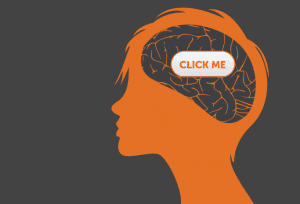December 5, 2013
 Don’t get me wrong: No one who’s held an iPhone can deny the appeal of beautifully designed technology. But what really makes a product stick has more to do with the psychology behind its design than its physical or functional features. It’s all about the how, not the what.
Don’t get me wrong: No one who’s held an iPhone can deny the appeal of beautifully designed technology. But what really makes a product stick has more to do with the psychology behind its design than its physical or functional features. It’s all about the how, not the what.
Every few years the health and wellness industry, like any other, cycles through hot trends and buzzwords. In the last few years there’s been quite a bit of focus in “gamification” in health. The idea is that gamifying a health solution, like a weight loss app, will make it more appealing and addictive to the user. It will make the app stick, and therefore lead to better outcomes.
Clearly, though, this doesn’t always work out as planned: Gartner estimates that 80% of gamified solutions will be off the market by next year due to poor design. Why isn’t gamification working for health?
To figure that out, we need to step back and think about what we really mean when we talk about gamifying something. Gamification refers to the embedding of gaming principles in a non-game activity. Sometimes this results in a product that feels an awful lot like a game, but not always. For example,Kevin Werbach of the Wharton School of Business references a gamified error detection process used by software engineers at Microsoft to test the Office suite. In that case, there are game elements such as competition, leaderboards, and progression of activities, but no engineer would confuse the process with a video game. Yet, it effectively detected thousands of errors prior to the software release.
So if a good gamified solution doesn’t have to look like a game, what does it have to have? I argue that it has to capture the psychology of games, the principles that capture people’s attention and keep them coming back for another experience. Games hook players by fulfilling their psychological needs. Self-determination theory describes what those needs are:
- Autonomy. We need to feel in charge of our own destinies, at least to some extent.
- Competence. We need to feel like we’re learning and growing, that we’re capable of success, and that we’re good at the things we do.
- Relatedness. We need to feel connected to other people. We’re fundamentally social, and take pleasure in our relationships.
The stickiest technology hooks users not through sleek design but by helping to meet these three fundamental needs.
What does that look like? Well, there are a few things that a sticky health and wellness program should do if it’s going to grab users by meeting their fundamental needs:
Autonomy: Offer choices as often as possible, while recognizing that totally free choice is probably not possible for many health and wellness goals. Someone whose doctor has prescribed hypertension medication is going to need to take their medication as prescribed, while also making dietary and physical activity changes. That’s just the way it is. In that case, you can help people feel more ownership of that choice by linking it to really personal goals they have. At the Human Performance Institute, coaches help attendees articulate their ultimate life mission to help put health changes into perspective. Think of it as getting someone to be happier about eating their broccoli because they know it means they’re closer to having the chocolate cake.
Competence: Health and wellness is not easy for people to achieve. People might have to deal with multiple health issues at the same time, or they may be confused by what they need to do. You can support competence by providing clear direction in the simplest possible terms. Less is more; it’s better if people make small changes that aren’t quite enough than no changes at all because they’re overwhelmed. And give feedback whenever you can, as soon as you can. Letting people know what they’re doing right and how they can do better will help them learn.
Relatedness: It’s easy to position social networking as the solution to supporting relatedness, and in fact that is one way to help fulfill this need. But it’s not the only one. People can feel psychologically connected to others without necessarily interacting directly. Consider helping people understand where they fit into the bigger picture — do they fall into a health and wellness segment, for example? Personalizing the user experience of your product is also a way to help people feel related. For example, at Wellness & Prevention, a Johnson & Johnson company, we tailor unique plans for each participant in our digital health coaching programs based on their personal data. In this case, they’re engaged in a relationship with the product.
I’ve used health and wellness as the context here, because it’s the industry with which I’m most familiar. But examples of how self-determination theory has motivated users can be found across industries, including education, video gaming, sports performance, and environmental sustainability.
By all means, sleek technology and elegant functionality increase product appeal. But to really hook users with your product, help fulfill their psychological needs.
Amy Bucher is a psychologist who focuses on designing programs that help people live healthier and happier lives by changing their behaviors. She is Associate Director of Behavioral Science for Wellness & Prevention, Inc., a Johnson & Johnson Company.
http://www.wired.com/2013/12/compelling-design-is-about-psychology-not-technology-3/